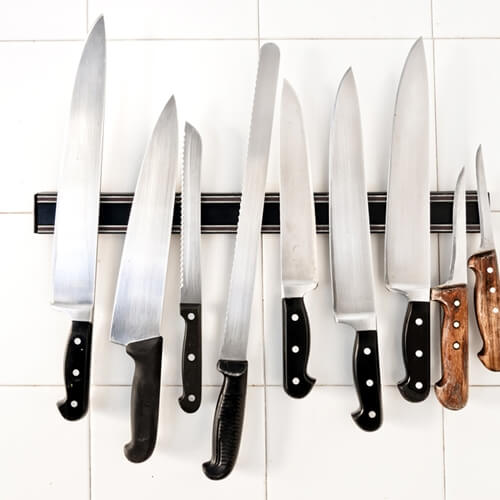A Quick Guide To Chopping Techniques And Knife Safety
Knives are a vital tool for chefs. They’re used in almost every recipe, and in almost every facet of the kitchen. People who are taking online chef’s courses need to become familiar with the different ways to use a knife, and general knife safety tips. Here’s a quick overview of some of the different chopping methods and how to protect yourself when working with sharp edges:
Chopping methods
- Cubing: cutting foods into cubes, usually between 1/2 – 1 inch.
- Dicing: similar to cubing but smaller, cubes are between 1/8 – 1/4 inch.
- Mincing: cutting into very small pieces, no particular shape. Pieces are less than 1/8 of an inch when minced.
- Julienne: cutting food into long, thin strips.
- Brunoise: very small cubes, done by cutting from julienned strips.
- Paysanne: slicing julienned strips into small, thin squares.
- Chiffonade: method used to cut leafy vegetables into long, thin strips. Done by rolling many leaves into a tube and slicing across.
Knife safety
Using kitchen knives without paying attention to safety practices can lead to serious injury. Here are some tips to keep in mind when using knives:
- Keep knives sharp. A sharp knife is easy to control, where a dull knife may skim over food and lead to injury.
- Use the correct knife for the job at hand. Using a large knife for a task better suited for a small knife or vice versa can be dangerous.
- Never cut on a moving or wobbly surface.
- Pay attention to what you’re doing.
- When carrying knives, keep the tip pointed down and the blade facing away from you.
Recommended Posts


